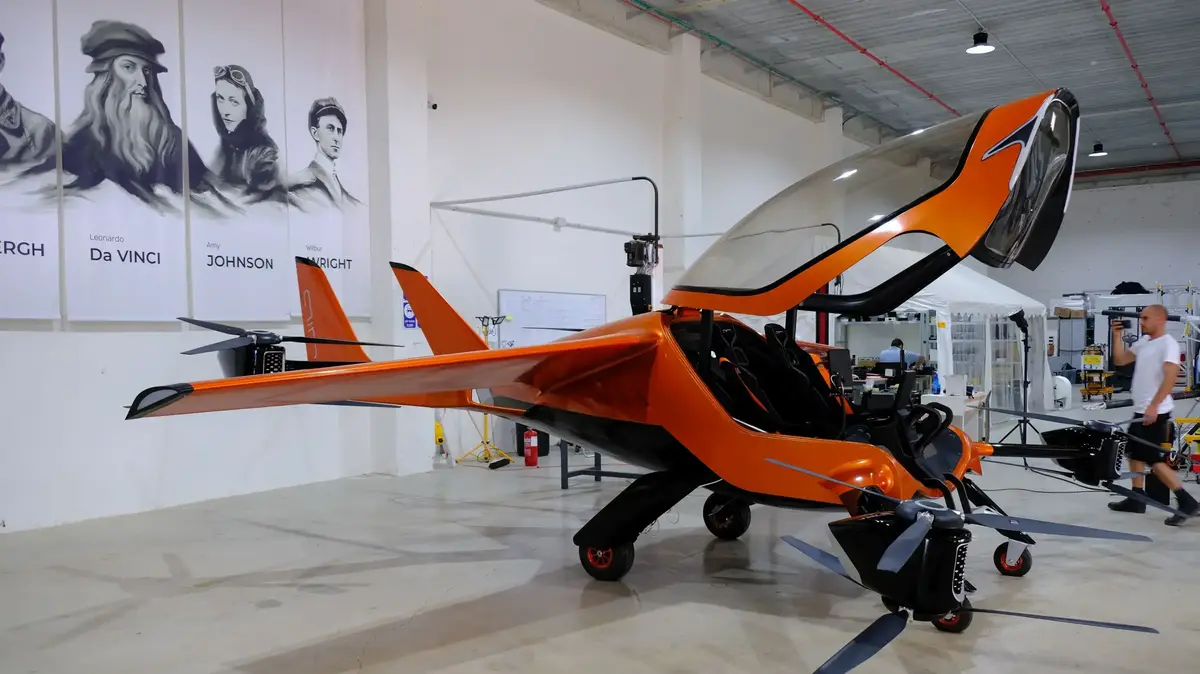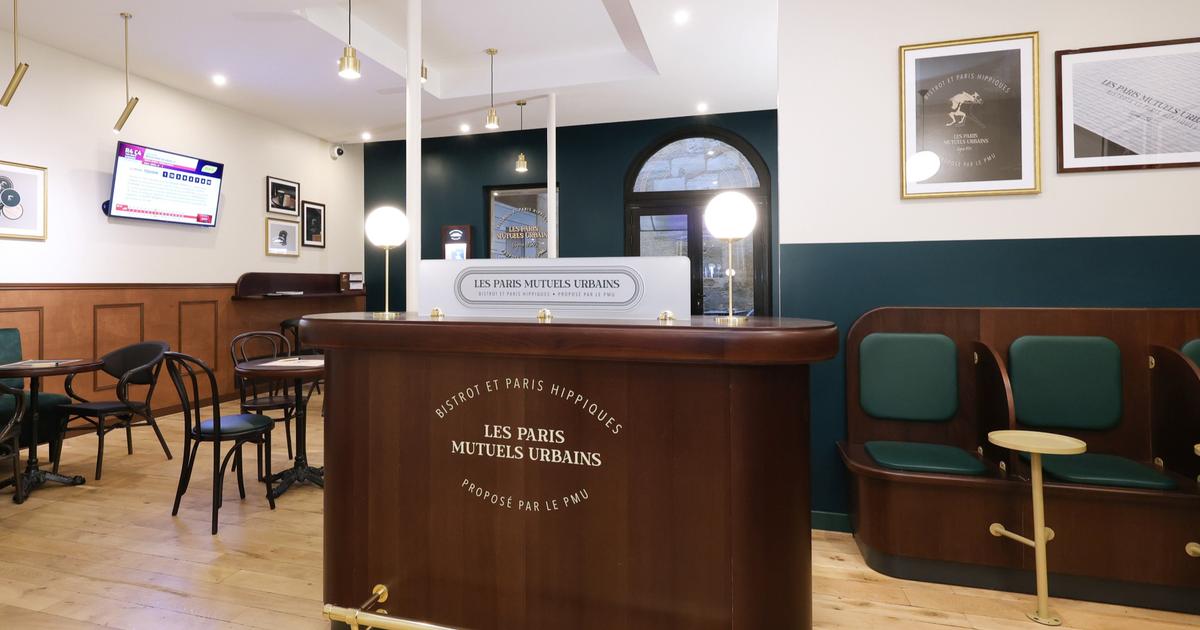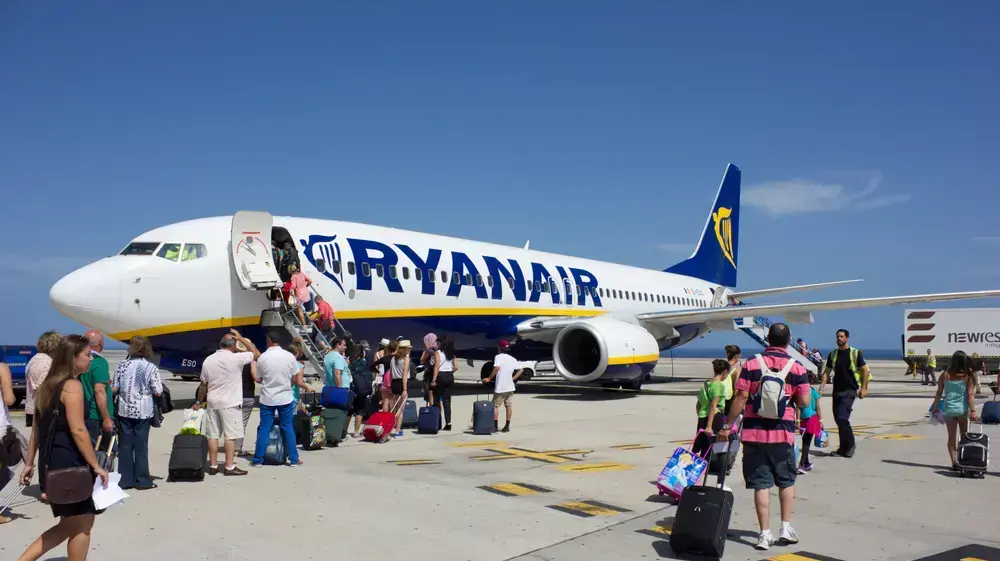We met the tool that would reinvent the popular aviation
At first I was sure I was hallucinating, it looked like a sports car with wings and propellers.
When I approached I saw that it was not it, when they explained to me what it was I realized that it was actually yes!
Keenan Cohen
04/05/2022
Wednesday, 04 May 2022, 21:47 Updated: 22:36
Share on Facebook
Share on WhatsApp
Share on Twitter
Share on Email
Share on general
Comments
Comments
For one second it would have looked like a mirage, a mirage, if you would like us to stay in the aviation worlds.
On a side street in an industrial area stands in the hangar yard a strange aircraft, a giant glider supplier a futuristic aircraft supplier, in bright orange and for one second inside my puree brain it would look like a McLaren car with propeller blades in its corners (and I was not really far behind) - in my life even without AIR's company order I would go inside.
About 85 years ago, under innocent cover names and the umbrella of the Haganah organization, they were placed right next to the place where these photos were taken, the basics of Israeli aviation.
Pardes Hanna and next to it Tel Yosef, Haifa and others were the places where basic and initial training was provided to the people of the settlement in the basics of aviation, with the understanding that a Hebrew military force to be established one day will also have to take part in air combat.
Very soon, this place is about to embark on one of the most fascinating gospels of the personal aircraft field in recent years.
More on Walla!
At the price of a luxury car: AIR's flying tool on the way
To the full article
Does not look like anything else you have met before (Photo: Rami Gilboa)
The basic principle of "Let's push this big thing forward and use its lift" is quite valid for the Wright brothers' plane and the F35
Although the world of aviation seems like a knowledge-intensive and advanced field, and it is indeed so on a certain level, when viewed in a broader perspective - for decades, its progress has been slow, and despite the breakthroughs overall it has maintained the same general azimuth.
Yes, jet engines and turbo props pushed the propeller legs, electronic control the rudder metal cables, aluminum and titanium the fabric cladding and light metals the wood skeleton - but let's - the basic principle of "let's push this big thing forward and use its lift" - Pretty valid for the Wright Brothers plane and the F35.
And there has been a really good reason for this progress, from safety to engineering constraints.
But all this is changing right before our eyes in recent years.
Because we are at a revolutionary turning point when it comes to small airlines as we have known them to this day.
If in the past these were simply attempts to apply principles that applied to large aircraft in tiny Anpin - the tremendous advances in composites, electric motors, batteries, computer control, flight controls and even computer-aided planning on the technological and civilian side demand for easy flight experience Commercial - Push and push a variety of companies to try and offer exciting aviation solutions.
Even the sitting position is reminiscent of a sports car and it is no coincidence, says Rani Plaut (left) (Photo: Rami Gilboa)
"We do not want to build a flying taxi or a skimmer with room for people," says Rani Plaut, CEO of AIR and co-founders alongside Chen Rosen and Nathaniel Goldberg, "We want to build a flying sports car" and his eyes are shining. The market, he explains to me , Is currently located between two ends of these new aircraft.Fin one hand small, single-seater and open aircraft that are actually a giant glider, and large, multi-blade aircraft that will be used to fly 4-6 passengers. Four blades, the other large, heavy, requires special flight permits, can land in very defined places and especially very expensive.The
place AIR is aimed at is between these two poles, but closer to a sporty personal aircraft for limited uses, which will allow accessibility both in terms of operating license His, permits to fly over most areas and also will be on the accessible side (relatively yes?) Of the price range.
This is a single and complete prototype of the AIR ONE, unmanned flights will start within a few weeks (Photo: Rami Gilboa)
And when Rani talks about the intention to build a flying sports car, he knows what he's talking about in several ways.
First of all because he drives one of the finest, one that you know that whoever is sitting in it did not buy the most expensive - but the best.
And the second reason is that in his other company, he has accumulated tremendous mileage in consulting manufacturers like Porsche and part of the design of the Audi R8's supercar.
And his approach to this tool, AIR's approach to this tool is more similar to how cars are built more than aircraft in the aspect that until he said it really - do not think about it - make the flight experiential and fun for the operator and not just a point-to-point tool.
Imaging of the cockpit as it is expected to appear in the production version (Photo: Manufacturer's website)
The journey around the prototype of the tool leads us around the workshop, its evolution from early samples, the scaled-down attempts that led to the breakthrough of the combination of blades and a fixed wing, and up to this full-size standing in front of us.
In front of the chassis of one of the tools used for the early experiments (construction of Edo Cohen, the legend of SUVs and the father of Zibar's father, probably one of the best SUVs in the world), Rani explains at length and detail about each component, its choice, the implications of the tool And why he and no one else is there.
In every aspect we touch, from human engineering, to engines and batteries the same point is repeated - it is a tool that the fact that he created something completely new allowed them the freedom to think about this whole thing completely differently.
Which connects to his other perception as a tool in which the emphasis is on creating a smooth and flowing operation.
The simple choice of four engines with eight blades produces the power to take off and land vertically and the fixed wing gives speed and range - other beige tools
Four dual-blade electric motors produce 771 hp (Photo: Rami Gilboa)
I know people who would get more entangled with the automatic door in a supermarket than fly this tool
In one of the corners there is a pair of seats on a huge iron cradle and next to it a screen and VR glasses - the simulator.
I go through a brief explanation of how to operate the tool, how to move it from a levitation mode to a horizontal flight through the stick and haida - glasses on the eyes and start flying.
The simulator itself is incredibly detailed and realistic, mainly due to the fact that it is not there for tournament purposes and a PlayStation replacement for the 30 employees, but a complete physical simulator, that is, a tool for everything used by engineers to test the systems.
In "float" mode the stick allows the angle of the nose or of the tool to be tilted on the longitudinal axis to move in all directions.
In order to rotate it simply rotate the base of the handle on its axis, like a throttle of a motorcycle.
By selecting the "flight" mode, the fixed wing enters the image and provides aircraft-like behavioral characteristics for everything - tilting to the sides to produce a turn and backward for ascent or dive.
Even deducting the fact that this is not a real flight, if there is one thing that is realized very quickly is that if I was able to fly it at a good level and confidence after a shorter explanation than boarding - at AIR they completely cracked this story of making the flight experience easy to understand And the tool itself to lightly control.
I know people who would get more entangled with the automatic door in a supermarket than fly this tool.
In fact, the story of climbing into it may be more challenging for most people than running it.
One of the challenges is to succeed in including it in the definition of an aircraft that allows a basic flight license (Photo: Manufacturer's website)
For some reason, when someone sits Vitis flying this tool over my head - I'm really, really fine with the computer and control controlling it.
Much of the credit for its ease of flight goes to the team behind its "patented trick" - the flight control system the company calls - fly by intent - flight by intention, or in simple Hebrew translation: And make it move in an astonishing way from place to place while obeying a person with minimal training in operations. "
In fact, think of this system as a kind of co-pilot who engages in the craft of flying with you.
And in fact also makes sure first of all that you do not get yourself in trouble, that you do not endanger others but mostly monitors your actions non-stop and "polishes" them while controlling the four engines and the eight blades.
The result, again, at least in a simulator experience is a flight experience that leaves its operator only to point out where he wants to go and let the tool do its thing.
With a hand on heart, when it happens to me in sports cars it boils me down, because I will look for the challenge in control, the excitement in its operation when it stems from the driver's skill,
The fixed wing allows it range, maneuverability and speed that skimmer-like tools are not capable of (Photo: Rami Gilboa)
The way to allow almost anyone to get in and fly this tool, the company still has to overcome a number of regulatory hurdles.
Plaut describes working with the U.S. Air Force FAA for the past three years as very comfortable.
Their goal is to get the manager to recognize a vehicle as one that falls under the sub-definition of so-called "Chapter 23", a definition of light aircraft, which require a relatively short training chapter and have flight control that allows a safety envelope for the operator and his environment.
In the United States there is also a sports pilot license, which involves 15 hours of training and 5 hours of solo flight, although I understand the AIR tool does not meet the conditions for its definition as such.
The vision: with folded wings, it should sit even in spaces significantly smaller than those of airplanes (Photo: Manufacturer's website)
The concept of the ONE (model name) as something that is first and foremost a recreational vehicle and not necessarily a means of transportation, similar to one who owns an SUV or sports car alongside his everyday vehicle, allows the company to present technical specifications that match these uses.
For example, the power for the four engines that jointly produce 771 hp is provided by a 60 kWh battery, even smaller than what is common in popular electric cars.
And despite a maximum flight speed of 250 km / h, the cruising speed of the vehicle will be 160 km / h and depending on its usage characteristics its stated range is 177 km or in terms of flight time - a single flight hour. On the other hand, its ability to support ultra charging Fast and the relatively small battery means that within one hour of charging it is ready to go for another flight and if all it takes is a quick electrification, then 30 minutes will bring the battery from 20 to 80 percent.
Of course, these depend on the nature of the use, the style of flight and the weight loaded on it, the latter is limited in the first model to
200 kg, that is, two reasonable passengers on their luggage or two unreasonable passengers without luggage.
Three-tiered, the AIR ONE's automatic flight control is the first stage, the second stage is the familiar principle of redundancy from the aviation world that also applies in his case - that is, even engine failure and even wing loss will not cause loss of control of the aircraft and the last resort is parachute Built-in is equipped with the tool, similar to the one found in the light aircraft of Cyrus
.
The transparent bottom is very useful in landing maneuvers (Photo: Rami Gilboa)
Within a few weeks of the publication of this article, the first AIR ONE levitation trials will begin, the first in the unmanned trials that this tool will go through.
Their goal will be to put to the test its stabilization and control systems in a full-size model.
From there the tool will go through a series of stages of the various flight tests on the way to obtaining the approvals for manned test flights.
time schedules?
Very crowded, with all of these due to end over the next year and a half with a goal of reaching first dedications in 2024.
An equally ambitious goal is to meet their target price.
The AIR ONE is expected to start at a price of $ 150,000.
More or less the price of a sports car like the Aston Martin Vintage or Audi R8 - their price abroad yes? Let's not be confused ...
The story of entering and exiting it is a bit challenging in the first stage (Photo: Rami Gilboa)
So the AIR ONE may have hung in tall trees with the pioneers of theoretical and practical aviation like Da Vinci, Emmy Johnson, Charles Lindberg, Wilbur Wright and Emilia Earhart looking at it from behind, hanging on huge posters from the walls of the hangar, but it's definitely a chance to see How the crossroads where the Israeli head meets, a handful of daring, thinking outside the box and lots of ambition and innovation continue to produce blue and white aviation out of nowhere.
vehicle
Car News
Tags
air
aviation
start up









